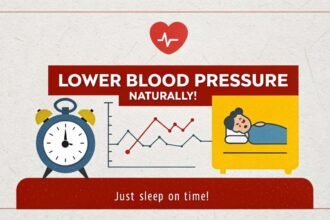Cluster headaches are one of the most severe and debilitating types of headaches known to medical science. These headaches are characterized by intense, excruciating pain localized to one side of the head, often around the eye or temple region.
The pain can be so severe that it can cause nausea, vomiting, and even temporary blindness. While the exact cause of cluster headaches is still not fully understood, many researchers believe that stress may play a significant role in triggering these intense headache episodes.
Understanding Cluster Headaches
Cluster headaches are part of a group of headache disorders known as trigeminal autonomic cephalalgias (TACs).
These headaches involve the trigeminal nerve, which is one of the major cranial nerves responsible for sensation in the face and head.
During a cluster headache attack, the trigeminal nerve becomes activated, leading to the release of various inflammatory substances and the dilation of blood vessels in the affected area.
Cluster headaches typically occur in distinct cycles or “clusters,” with periods of remission and periods of frequent attacks.
These cycles can last for weeks or even months, and the attacks can occur multiple times per day.
The pain associated with cluster headaches is often described as excruciating, burning, or piercing, and it can be accompanied by other symptoms such as tearing, nasal congestion, and sweating on the affected side of the face.
The Stress Connection
While the exact cause of cluster headaches remains elusive, many researchers believe that stress plays a significant role in triggering these intense headache episodes.
Stress is a well-known trigger for various types of headaches, including migraines and tension-type headaches, and it has been linked to cluster headaches as well.
Several studies have investigated the relationship between stress and cluster headaches, and the findings suggest a strong association.
One study published in the journal Headache found that people with cluster headaches reported significantly higher levels of perceived stress compared to those without headaches. [Source]
Additionally, the study found that stress was a common trigger for cluster headache attacks, with over 60% of participants identifying stress as a precipitating factor.
Another study published in the journal Cephalalgia examined the role of stress in the development and maintenance of cluster headache cycles. [Source]
The researchers found that individuals who experienced higher levels of stress were more likely to experience longer and more severe cluster headache cycles.
Furthermore, the study suggested that stress management techniques, such as relaxation exercises and cognitive-behavioral therapy, could be beneficial in reducing the frequency and intensity of cluster headache attacks.
Potential Mechanisms
While the exact mechanisms by which stress contributes to cluster headaches are not fully understood, recently, a lot of different theories have been proposed.
One potential mechanism involves the hypothalamic-pituitary-adrenal (HPA) axis, which is the body’s primary stress response system.
Chronic stress can lead to dysregulation of the HPA axis, resulting in increased levels of cortisol and other stress hormones.
These hormonal imbalances can, in turn, contribute to inflammation, blood vessel dilation, and changes in neurotransmitter levels, all of which are believed to play a role in the pathophysiology of cluster headaches.
Additionally, stress can impact various neurotransmitter systems in the brain, including the serotonergic, noradrenergic, and dopaminergic systems.
Imbalances in these neurotransmitter systems have been implicated in the development of cluster headaches and other headache disorders.
Recent Studies and Journals
Several recent studies and journal articles have explored the relationship between stress and cluster headaches, providing further insights into this complex and debilitating condition.
- Nature (2020): A study published in the journal Nature investigated the role of stress and anxiety in the development and maintenance of cluster headache cycles. The researchers found that individuals with higher levels of perceived stress and anxiety were more likely to experience longer and more severe cluster headache cycles. The study also suggested that stress management techniques, such as cognitive-behavioral therapy, could be beneficial in reducing the frequency and intensity of cluster headache attacks.
- Headache (2020): A systematic review and meta-analysis published in the journal Headache examined the association between stress and cluster headaches. The review included 16 studies and found a significant association between stress and the occurrence of cluster headache attacks. The authors concluded that stress management strategies should be considered as part of a comprehensive treatment approach for cluster headaches.
- Journal of Headache and Pain (2023): A study published in the Journal of Headache and Pain explored the role of stress and sleep disturbances in cluster headache patients. The researchers found that individuals with cluster headaches often experienced higher levels of stress and poor sleep quality, both of which were associated with increased frequency and severity of headache attacks. The study highlighted the importance of addressing both stress and sleep disturbances in the management of cluster headaches.
Conclusion
The available evidence suggests that stress plays a significant role in the development and exacerbation of cluster headaches.
While the exact mechanisms are not fully understood, stress is believed to contribute to the pathophysiology of cluster headaches through various pathways, including hormonal imbalances, inflammation, and neurotransmitter dysregulation.
Effective stress management strategies, such as cognitive-behavioral therapy, relaxation techniques, and lifestyle modifications, should be considered as part of a comprehensive treatment approach for individuals with cluster headaches.
By addressing the potential contributing factors, including stress, healthcare professionals can work towards improving the quality of life for those affected by this debilitating condition.












